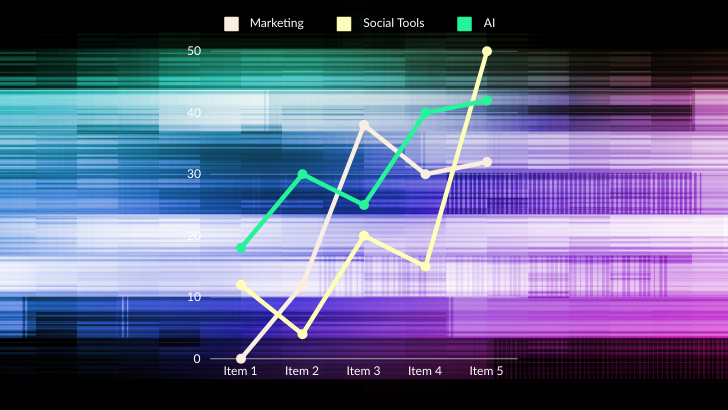In its many forms, supply chain integration has been around for years. However, recent disruptions have accelerated its adoption within manufacturing. According to our survey, more than 50% of manufacturers already use automated integration when dealing with customers. More than a quarter of organizations (24%) have reached the highest level of fully automated, real-time integration.
| Today | Three years | |
| Manual and unstructured communication (paper, fax, phone, email, file sharing, etc.) | 19% | 12% |
| Manual but structured communication (web EDI or other portal solutions, web forms, smart forms, etc.) | 27% | 13% |
| Automated message-based integration (Direct EDI integration, Value-Added Networks) | 30% | 42% |
| Automated real-time system integration (API-based synchronous integration | 24% | 33% |
This picture is changing rapidly. In less than three years, manual transactions will have dropped by almost a half. Fully 75% of all B2B transactions in the manufacturing sector will soon be through automated supply chain integration.
The benefits of cloud-based integration are clear and far-reaching
Organizations have always viewed cost as a key driver of B2B integration. However, manufacturers also need resilient supply chains based around much closer working relationships and collaboration with their trading partners. This demand changes the benefits that manufacturing companies seek in their B2B investments.
When asked about the benefits of digital supply chain integration, manufacturing respondents are increasingly looking beyond financial returns. While reducing costs – such as suppliers or logistics – still ranked highly, strategic business benefits were also crucial.
| Reduced operating costs | 41% |
| Improved supply chain visibility | 37% |
| Faster time to market | 36% |
| Improved market competitiveness | 34% |
| Improved data quality and accuracy | 34% |
| Reduced logistics costs | 31% |
| Improved customer satisfaction | 30% |
| Improved inventory turn rates | 30% |
| Reduced cash-to-cash cycle times | 29% |
| Reduced business and compliance risk | 24% |
The benefits of digitizing supply chain documents
The benefits of effective supply chain integration became even more apparent when we studied the effects on business performance. This is especially true of digitally exchanging various business and supply chain documents. In every case, organizations that used supply chain integration for specific documents reported a significant uptick in business performance. In most cases, improvements were impressively above 70%.
| Improvement to supply chain performance | Share digitally in next three years | |
| Inventory Inquiry | 89% | 28% |
| Product Catalogue | 88% | 27% |
| Purchase Order | 86% | 41% |
| Functional or Order Acknowledgement | 86% | 21% |
| Advance Ship Notice | 85% | 34% |
| Returns | 85% | 23% |
| Request for Quote | 84% | 31% |
| Bill of Lading | 84% | 19% |
| Shipping Status | 83% | 36% |
| Receiving Advice | 82% | 16% |
| Price information | 79% | 37% |
| Invoice | 79% | 37% |
| Logistics Service Request/Response | 79% | 27% |
| Forecast/Planning Management | 78% | 27% |
| Payment Remittance Advice | 76% | 25% |
| Customs Documents | 76% | 24% |
| Change Requests | 68% | 24% |
| Notes or other unstructured information | 68% | 19% |
As supply chains become more central to business success, these potential improvements are too significant to ignore. However, our research suggests that manufacturers must also accelerate progress toward digitizing these key supply chain documents.
There is only one document – the purchase order – that over 40% of respondents expected to share digitally in the next three years. One explanation for this is that while manufacturers are accelerating the adoption of supply chain integration, integration itself is becoming more complex and challenging.
More partners, more tiers, more systems …more headaches
Undoubtedly, building new levels of agility and resilience into modern supply chains places the focus on increased digitization. It also improves integration and collaboration across increasingly global, extended, and complex supply networks. For manufacturers, modern supply chains are global, multi-tiered entities with multiple partners using multiple systems.
| Complex supply networks with multiple tiers | 28% |
| Complex products and product ranges | 27% |
| Global, extended supply chains, elongated lead times | 27% |
| Complex integration of multiple IT systems | 24% |
| Lack of budget to implement process changes | 24% |
| Frequent new products and increased product obsolescence | 20% |
| Lack of internal skills | 20% |
The challenges are large and growing even as manufacturers are increasingly aware of the need for effective supply chain integration solutions. In fact, our respondents saw integration issues on all sides as they dealt with increasingly multi-layered supply chains.
| Integration between internal supply chain systems | 12% |
| Integration with third party logistics providers | 11% |
| Integration with global trade/regulatory agencies | 11% |
| Integration with suppliers | 10% |
| Integration with customers | 10% |
Implementing a cloud-based unified supply chain integration platform
Manufacturers require a centralized cloud platform connecting the company to its trading partner community. To address supply chain integration challenges. This solution should help securely connect data to people, systems, and things. A cloud-based platform offers frictionless information exchange, end-to-end business visibility and extensive collaboration with a single digital backbone across business ecosystems.
6 key capabilities manufacturers should consider in an integration solution:
1 – A single unified integration platform
Leverage a single integration backbone that underpins digital transformation initiatives and serves as a platform for future business growth.
2 – Fully managed services
Take advantage of a flexible team of B2B and integration experts to manage your day-to-day B2B operations and integration requirements.
3 – Seamless any-to-any integration
Manage growing integration complexity and demands for speed while embracing old and new forms of integration, including API.
4 – Secure, global connectivity
Easily assign digital identities to people, systems and things to enhance collaboration, prevent data breaches and improve trading partner ecosystem security.
5 – Real-time business insights
Aggregate information flows across a common integration environment and delivers real-time insights into business operations to whoever needs it.
6 – Self-service integration capabilities
Get access to a comprehensive self-service tool suite that lets you manage your connectivity and day-to-day collaboration with trading partners.
Manufacturers are embracing the benefits of supply chain integration. However, our research shows that there’s still work to be done. OpenText Business Network Cloud can help manufacturers meet the challenges of increasingly global and complex supply networks and trading partner communities.
Read the full IDC report: Next-Generation B2B Integration Enables a Digital-First, Resilient Supply Chain
Find out more about OpenText supply chain integration solutions.



